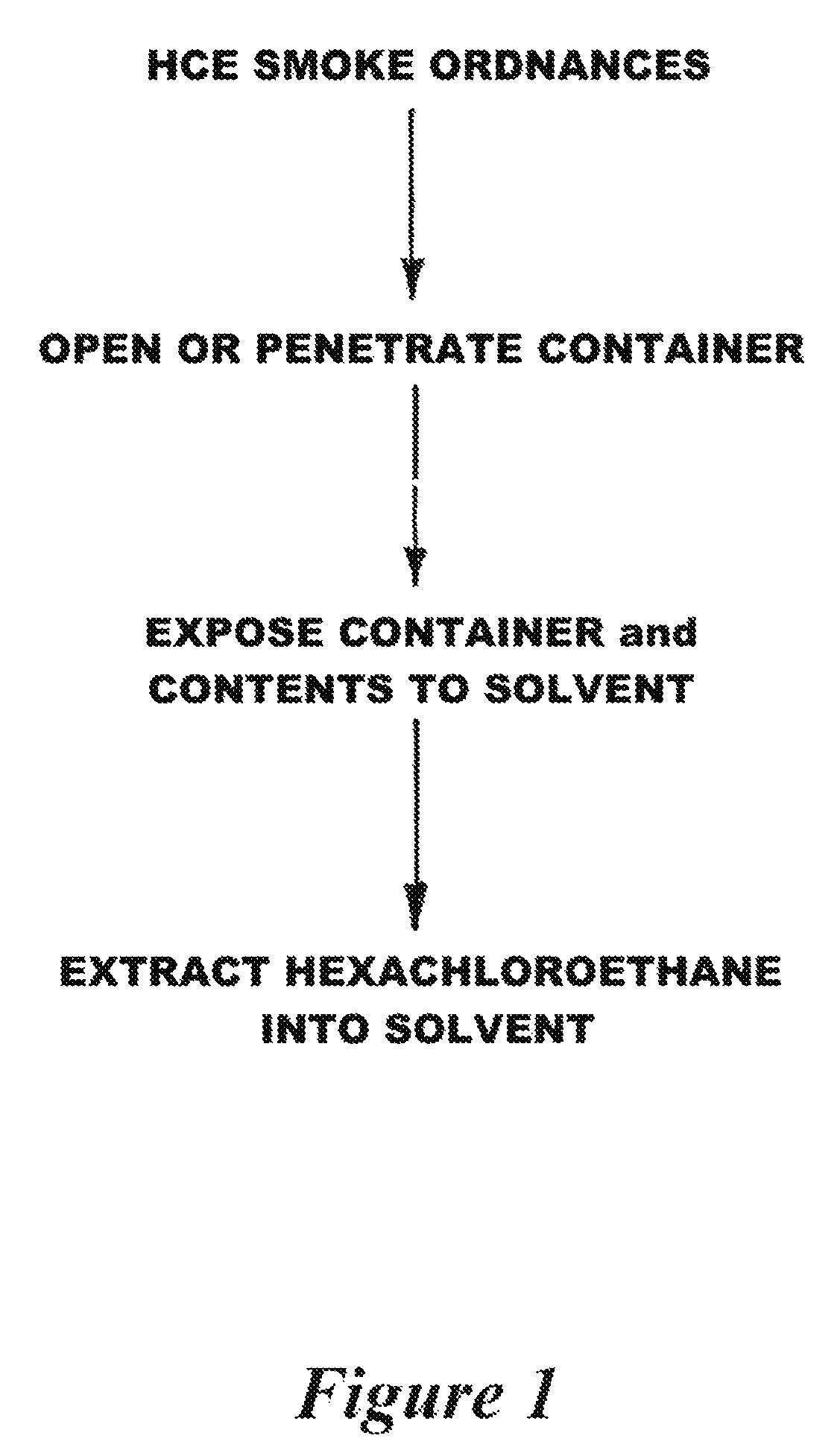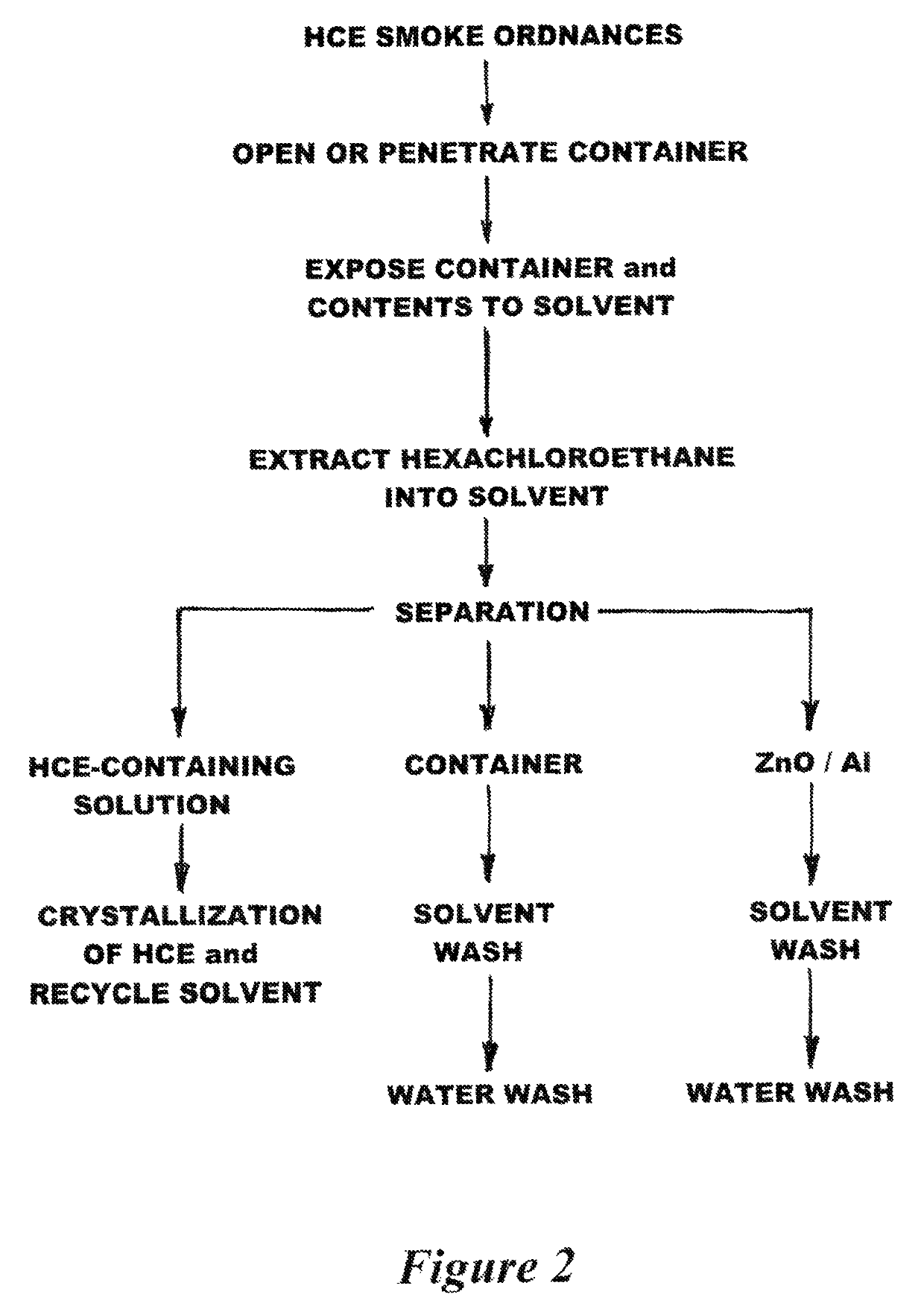Demilitarization of HC smoke ordnances
a technology of hc smoke and ordnance, which is applied in the direction of solvent extraction, separation processes, transportation and packaging, etc., can solve the problems of high disposal fees, high price tags, and high exposure of soldiers and munition plant workers to hc smoke and its volatile components
- Summary
- Abstract
- Description
- Claims
- Application Information
AI Technical Summary
Benefits of technology
Problems solved by technology
Method used
Image
Examples
Embodiment Construction
[0013]In order to accomplish the demilitarization of HC smoke ordnances comprising a reactive mixture of hexachloroethane (HCE), zinc oxide, and granular aluminum, it is necessary to separate one of the reactants from the reactive mixture. This can be either the HCE or the zinc oxide. The remaining constituents are not self-sustainingly reactive, with the exception of environmentally hazardous elements sometimes added with impure zinc oxide. The HCE is the only regulated substance and therefore upon its removal, as shown in FIG. 1, the balance of the constituents may be disposed of in a landfill, provided the fuse and igniter are first deactivated. The fuse and igniter, which are normally less than one percent of the ordnance, can be deactivated by effective hydration, and can be verified to be nonreactive by heating to above the activation temperature of 300° C.
[0014]However, much more desirably the contents of the ordnance can be recycled and reused as shown in FIG. 2. There is a ...
PUM
| Property | Measurement | Unit |
|---|---|---|
| boiling point | aaaaa | aaaaa |
| boiling point | aaaaa | aaaaa |
| temperature | aaaaa | aaaaa |
Abstract
Description
Claims
Application Information
 Login to View More
Login to View More - R&D
- Intellectual Property
- Life Sciences
- Materials
- Tech Scout
- Unparalleled Data Quality
- Higher Quality Content
- 60% Fewer Hallucinations
Browse by: Latest US Patents, China's latest patents, Technical Efficacy Thesaurus, Application Domain, Technology Topic, Popular Technical Reports.
© 2025 PatSnap. All rights reserved.Legal|Privacy policy|Modern Slavery Act Transparency Statement|Sitemap|About US| Contact US: help@patsnap.com


